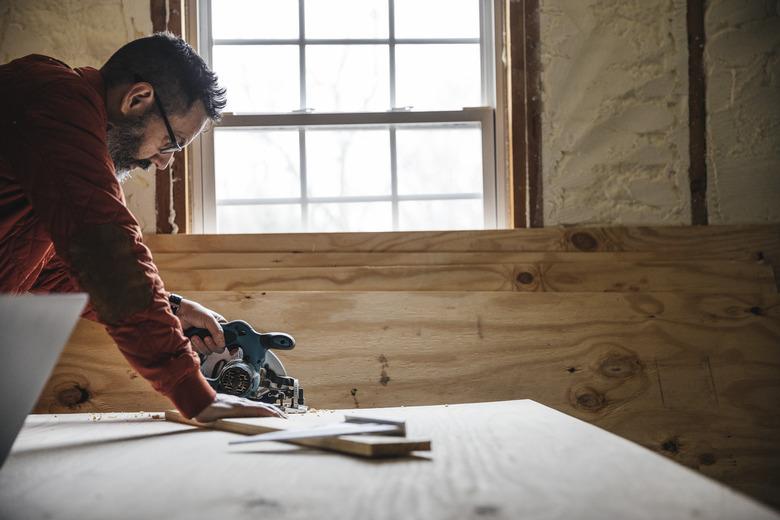The Best Way To Cut Paneling
The best way to cut medium-density fiberboard paneling or plywood paneling is to use a table saw. Of course, there are plenty of situations in which that isn't possible, so it's good to know you can still get great results with a circular saw. You can even cut paneling with a knife if it's thin enough. Whatever method you use, you need the right blade — and a sharp one — to avoid splintering and chip-out.
Besides the right blade, you also need the right technique, especially when cutting thin plywood paneling, which is prone to splintering. Keep those edges clean and the panels will fit together seamlessly when you mount them on the wall or use them for another purpose. This isn't hard to do, even for a novice woodworker.
Choose the Best Saw Blade
Whether you use a table saw or a circular saw to cut wood paneling, you need two things from the saw blade. The first is sharp teeth, and the second is a large number of them. The best circular saw blade for cutting paneling has carbide-tipped teeth, and it has at least 60 of them. A utility blade with 20 teeth will cut faster, but it will make a rougher cut. The same is true for a table saw blade; the more teeth, the better but 60 at a minimum.
The only viable way to cut curves is to use a jigsaw, and again, the best blade is one that has a high number of teeth per inch (TPI). The minimum TPI for cutting paneling is 10, but don't be afraid to increase it to as much as 24 if you need a really smooth cut. It will cut more slowly than a 6-TPI utility blade, but the extra time produces a clean cut, so it's worth it.
Reduce Vibrations While Cutting
Thin paneling needs support, or it will flex while you cut, creating vibrations that are sure to cause splintering and chipping. If you're cutting on a table saw, be sure the table fully supports the entire panel, including the section you cut off. When you're ripping strips from a full panel, it's a good idea to set up a table extension next to the saw to support the sheet, and you should also set one up on the out-feed side to catch it. You could also enlist a helper to do the catching.
When cutting with a circular saw or jigsaw, either clamp the sheet to a work bench or construct a support frame with 2x4s onto which you can set the sheet with its offcut side hanging over the edge. It may seem like a better idea to support the offcut, but when you're using a circular saw, the blade will bind near the end of the cut if the offcut can't fall away. Clamp the sheet or hold it down firmly while cutting and let the offcut overhang.
Use These Splinter-Prevention Techniques
When cutting paneling with a circular blade, chipping usually occurs at the point at which the blade first contacts the material. To prevent damaging the good side, mark your cut line and cut from the other side when using a circular saw. When cutting with a table saw, on the other hand, the good side should be facing up. If you're using a jigsaw to cut curves, the best way to prevent chipping is to lay masking tape along the cut line and cut through the tape.
Another way to prevent chipping is to score the cut line with a sharp knife before using a saw. If you need both sides of the paneling to be clean, score both sides. When cutting straight lines in thin paneling (from 1/8 to 1/4 inch thick), you may be able to score and snap it as you do when cutting drywall. If that seems too risky, just make repeated passes with the knife until the sheet separates.
